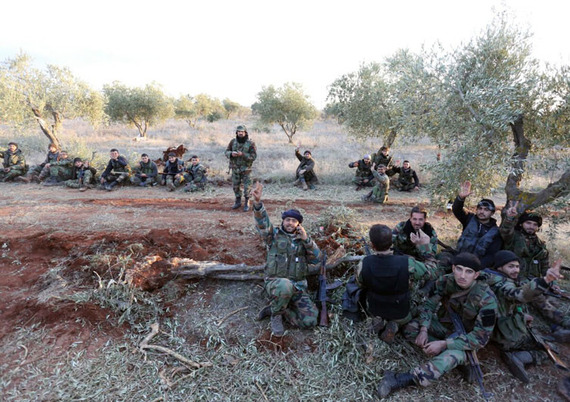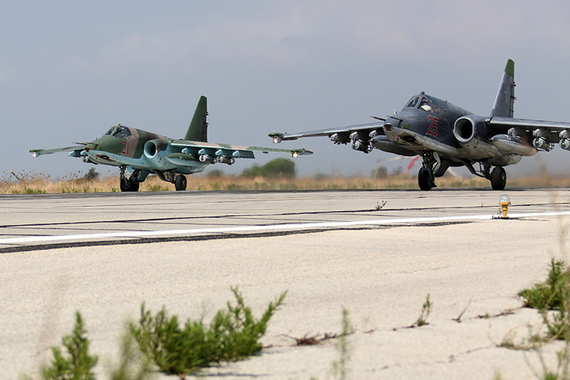Syria: Why the Ceasefire is Unraveling
The ceasefire in Syria seems on the verge of unraveling. It was never much of a ceasefire, so the issue might be purely a semantic one. Nonetheless, it underscores the continuing difficulties in crafting a political solution to end the five year long Syrian Civil War and its consequences.
The current ceasefire went into effect on February 27, as part of a United Nations brokered effort that would have led to elections in early 2017, and a transition to a freely elected representative government. The ceasefire was the culmination of an ongoing effort spearheaded primarily by Russia and the United States, as well as Saudi Arabia and Turkey, which had started in 2011 as an Arab-League and, from 2012 on, a joint Arab League-United Nations effort to end the fighting.
That effort took on even more urgency following the escalation of fighting that followed the intervention of Russian military forces in support of the Assad government and the rising tide of Syrian refugees attempting to enter Europe.
The ceasefire had specifically excluded ongoing military operations against Islamic State (IS) militants and the al-Qaeda affiliated al-Nusra Front. The ceasefire did result in a reduction in fighting in a number of the theaters of the Syrian Civil War, principally in the south. The ongoing Syrian Army campaign to retake Aleppo, however, continued unabated.
Moreover, while Islamic State militants generally operated within a discreet area, al-Nusra militants were often co-located with other rebel groups, including the U.S. backed, Free Syrian Army, and on occasion would even collaborate with them in joint military operations against both Islamic State militants and Syrian government forces.
From the very beginning of the Russian military intervention in September 2015, it was clear that the bulk of the Russian airstrikes were being directed at the Western-backed Free Syrian Army and other "moderate groups." The Russian intervention had been prompted by the need to stabilize the client Assad government in Damascus, then getting dangerously close to losing key territory to the Free Syrian Army.
 Syrian army's encirclement of Aleppo. Pink: Syrian Army, Green: Anti-Assad rebels,. Grey: Islamic State
Syrian army's encirclement of Aleppo. Pink: Syrian Army, Green: Anti-Assad rebels,. Grey: Islamic State
It was equally clear that the Russian intent was to eliminate any Western-backed alternatives to the government of Bashar al-Assad as a viable option and force the United States and its allies to choose between either accepting a continuation of the Assad regime or allow Syria to come under the control of radical jihadist groups like Islamic State or the al-Nusra Front.
With the tide of battle now shifted strongly in favor of Syrian military forces and both the Free Syrian Army and Islamic State on the defensive, Damascus has made it clear that Bashar al-Assad has no intention of stepping down and that the only viable "political solution" would be some kind of "national unity government" under Assad that would incorporate the more moderate elements of the anti-Assad opposition and which, with Russian and U.S. support, would continue military operations against Islamic State and the al-Nusra Front.
The Free Syrian Army has rejected its participation in any unity government that includes Assad but has indicated it would accept members of his inner circle provided they were not guily of any "war crimes".
What is risking the complete collapse of the ceasefire, however, is the Syrian Army's ongoing operations to retake Aleppo. Those operations had never stopped, even under the ceasefire. Syrian military forces are now on the verge of surrounding Aleppo, Syria's largest city, and a key stronghold of the Free Syrian Army, and also various jihadist groups including the al-Nusra Front. The prospect of retaking control of the city is simply too tempting for Damascus to pass up.
Moreover, the political situation has changed significantly in the past six weeks. What prompted Russian calls for a ceasefire was the Kremlin's concern of an imminent Turkish intervention into the civil war. Although Ankara has been a vehement opponent of the Assad regime, its more immediate concern was to prevent the creation of a semi-autonomous Kurdish state along the Syrian-Turkish border.
That proposed state, Rojava, or Syrian Kurdistan, made up of the cantons of Jazira, Kobani and Afrin, was rapidly taking shape as the largely Kurdish, Syrian Democratic Forces militia advanced west of the Euphrates in an attempt to link up with the Kurdish forces in Afrin Canton to the west. A successful link up would create a continuous Kurdish controlled zone in Syria from the Iraqi border almost all the way to the Mediterranean. Such a semi-autonomous state was deeply concerning to Ankara, as it would prompt renewed demands of its own Kurdish community for more political autonomy.
In the weeks prior to the ceasefire taking effect, there were numerous signs that Turkey was actively considering a military intervention to secure the largely Islamic State controlled zone between Afrin Canton and the Euphrates. Ostensibly the intervention would be justified as an attempt to create a safe zone for Syrian refugees displaced by the fighting elsewhere in Syria. The Turkish military even went so far as to begin dismantling Turkish minefields along the border to prepare invasion routes into Syria.
A Turkish invasion, while it would likely have resulted in the quick occupation of the disputed territory, was not without its problems. Such an intervention was highly unpopular in Turkey. It would have likely promoted an increase in IS inspired terrorist attacks in Turkey.
Moreover, there was the more significant problem of who would provide air cover. Having shot down a Russian SU-24 jet fighter on November 24, for straying into Turkish air space, it was a foregone conclusion that the appearance of Turkish Air Force planes over Syria would have prompted a Russian retaliatory response. The downing of Turkish Air Force jets, to further complicate the situation, might have prompted Ankara to seek NATO support under Article 5 of the mutual defense treaty.
Ankara had extensive discussions with Washington over the prospect of the U.S. supplying air cover and, according to unconfirmed reports, an agreement in principal was reached, although the Obama White House has continued to insist no such agreement was made. It's very possible that Russia's repeated and deliberate provocation of Turkey in November 2015, was intended to complicate a possible Turkish intervention and make the consequences of an intervention much more problematic for Turkey the United States and for the NATO alliance in general.
The prospect of American air support for a Turkish ground invasion triggered Russian announcements that a Turkish invasion would quickly escalate, "draw other countries into the conflict," and even a declaration by Russian Prime Minister Dmitry Medvedev that it "could possibly lead to a third World War"--shorthand for a direct U.S.-Russian military clash. The Obama White House's strong support for the Russian ceasefire proposal was likely prompted by a desire to avoid the complications that would have been created by a Turkish intervention.
A Turkish intervention is still possible, but seems less likely now than it did six weeks ago. Washington has been quietly backing away from supplying air cover to Turkish Forces. The success of the Kurdish led Syrian Democratic Forces against Islamic State, as well as Russian overtures in support of the SDF, and more generally in favor of more autonomy for Syrian Kurds, has meant that the last thing that the Obama administration wants is a direct military clash between Turkey and the U.S. backed SDF or the prospect of having to choose between supporting one side or the other.
From the Kremlin's standpoint the "Syrian ceasefire" served the political purpose it was designed to achieve¬--it forestalled a Turkish ground invasion of Syria. For the Obama White House it is yet one more example of how it continues to be out maneuvered in Syria by Vladimir Putin. For the moment, the military operation to retake Aleppo goes on, Bashar al-Assad shows no signs of stepping down and the Syrian Civil War will continue unabated.


